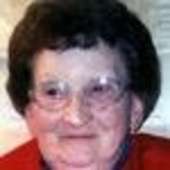- Volunteers honored for hours put in with hospital auxiliary (2/1/13)
- Fondly remembering Naomi (1/30/13)
- Record low temperatures leave residents without water (1/29/13)
- Flag flown in D.C. honors DAR (1/25/13)
- Blacksmith moves out (1/24/13)
- Little relief from blizzard (1/23/13)
- Ludlums win Bankers Award from conservation district (1/22/13)
Opinion
Memories spring eternal ...
Tuesday, January 29, 2008
100 YEARS AGO
(1908)
Fifty cups for a quarter. Rich, delicious and fragrant. It's our Golden Blend. The best coffee value that's ever been offered. It tastes right and it is right. Fresh roasted daily and delivered to your door.--American Pacific Tea Company, 5 South Main. Telephone 118
A social on Tuesday the thirty-first. Come and with laughter you will burst. At First M.E. church, come hop and perch. If you can't get on the roost, we'll give you a boost. You will be fed--until you're dead. Come dressed miss or hit, and have nothing to fit.
75 YEARS AGO
(1933)
Razing of the brick building occupied by he Brooks Electric shop at 120 South National Ave., on the site to be occupied by Fort Scott's new federal building, proceeded rapidly with workman tearing down the upper story of the structure.
George Brooks, owner of the electric shop, is moving today to the building owned by Charles Grant at 106 East Wall Street, just east of the Conine Sandwich Shop. The Chamber of Commerce is also preparing to move from its quarters in the Glunz Building at the corner of First Street and National Avenue. This corner and the lot south will be occupied by the Standard Oil Company which will move its station from the present location at Second Street and National Avenue.
50 YEARS AGO
(1958)
Photo caption: "Selection of the Outstanding Young Man of Bourbon County for 1958 was announced at a Jaycee banquet at the Fort Scott Country Club. The recipient is Wilber Fisher, 116 S. Crawford, who is shown receiving the award from Keith Upson, Kansas Junior Chamber of Commerce president."--Tribune photo
25 YEARS AGO
(1983)
How Leap Year began:
This is Leap Year. For this boon women owe a grateful memory to Julius Caesar. It was he who made months of 30 and 31 days, alternately except February, which had 29 days in ordinary years and 30 every fourth year. Because of his straightening out of the calendar difficulties and because he calculated to within a fraction of a day on each year Caesar was deemed worthy of a lasting memorial. Therefore, the name of the Quintillis was changed to Julius, after some victories by his armies, and a month named for him, too. It so happened, however, that the month named for Augustus had only 30 days, whereas that named for Julius had 31. Augustus did not like this so he had an extra day tacked on to August. Therefore, February had 28 days in ordinary years and 29 in Leap Year.
Since the time of the Caesars, however, it has been found necessary to reduce the number of Leap Years. If the dictionary were consulted for the number of Leap Years, it would probably read "every fourth year." That answer--though it would have done well in Caesar's time--is not correct now, because the arrangements which had been arrived at made the year of the proper length except the fraction of an hour. The year was, on an average 365 1/4 days long, whereas the sun's revolution is 11 minutes, 10 seconds less than that. The slight error might have been corrected at once by a reduction in the number of Leap Years. But the error was allowed to grow, so that by A.D.1582, the year in which it was corrected, it amounted to 10 days. In that year Pope Gregory decreed that October 5 be October 15, thus canceling the error of the past. The correction was not adopted by all countries at once, but gave rise to what is known as the new style and in some place in Great Britain, the terms are calculated by the old style. Having corrected the error of the past, Pope Gregory endeavored to prevent its recurrence in the future. There was equivalent to an excess of about three days in four centuries, so he decreed that of the last four years of the century only those which are divisible by 400 are Leap Years. Hence 1700, 1800, and 1900 were not Leap Years.

